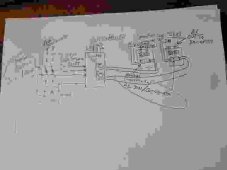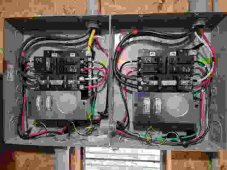Billybob16
New Member
- Joined
- Sep 27, 2021
- Messages
- 50
I need some design help. I'm wanting to add 37.5 KW Generator to Mt system. Some place here I once saw a diagram of what the configuration would be for what im proposing but can't find it now. If anyone knows of it please provide me a location.
Currently I have 4 spf5000es, 3 solar arrays 2 full racks of lifepo4 battery's, 2 growatt transformers all tied in to a system breaker box. From that box it is wired to a large DPDT transfer sw. One side is the solar system and the other is the generator, out of that switch going to the house so I can feed the house with solar or switch to the generator if needed. The breaker box is not bonded to common but all are grounded including the generator to earth ground rod at pole 15ft away. I don't know if the Generators neutral is bonded or not but the gen is earth grounded. The AC from pole is feeding the inverters threw a separatebreaker box with a breaker for each inverter. All has been running for over a year now with no problems.
In a situation where the batteries have been discharged, no AC, and running on generator I want to feed the inverters with generator power so inverters can charge the battery's at the same time. I'm thinking I can install a manual transfer sw at the AC line in that would disconnect the pole AC and conect the generator. Will that work or will I have a neutral/ground problem?
Thanks!
Currently I have 4 spf5000es, 3 solar arrays 2 full racks of lifepo4 battery's, 2 growatt transformers all tied in to a system breaker box. From that box it is wired to a large DPDT transfer sw. One side is the solar system and the other is the generator, out of that switch going to the house so I can feed the house with solar or switch to the generator if needed. The breaker box is not bonded to common but all are grounded including the generator to earth ground rod at pole 15ft away. I don't know if the Generators neutral is bonded or not but the gen is earth grounded. The AC from pole is feeding the inverters threw a separatebreaker box with a breaker for each inverter. All has been running for over a year now with no problems.
In a situation where the batteries have been discharged, no AC, and running on generator I want to feed the inverters with generator power so inverters can charge the battery's at the same time. I'm thinking I can install a manual transfer sw at the AC line in that would disconnect the pole AC and conect the generator. Will that work or will I have a neutral/ground problem?
Thanks!
Attachments
Last edited:






